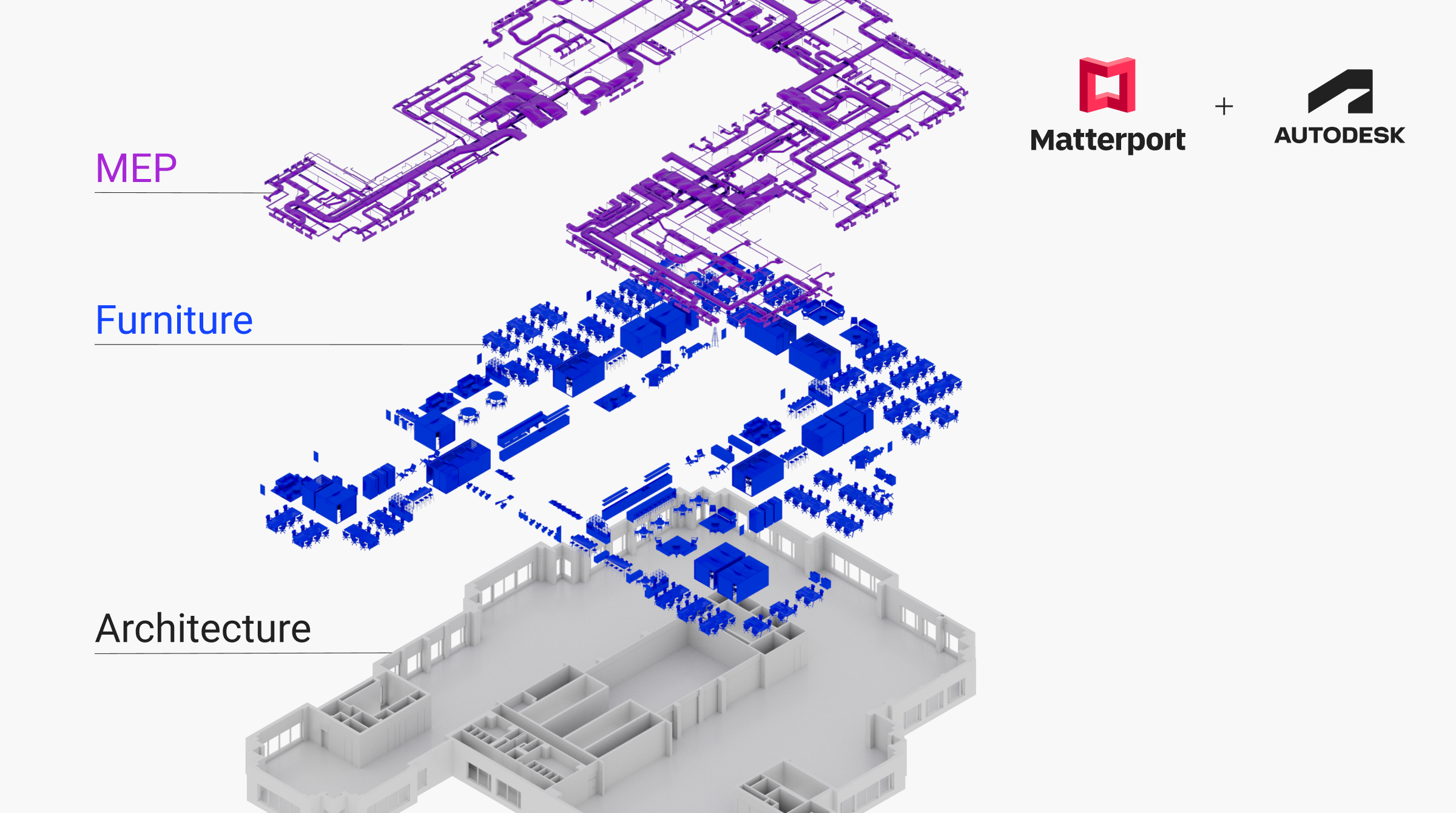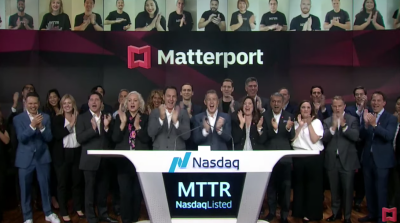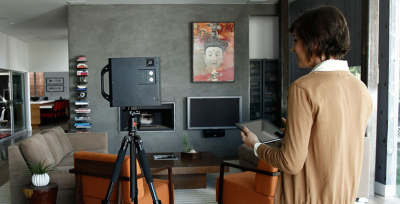Matterport is a reality capture company specializing in generating 3D digital twins, both with their own reality capture cameras and through an AI-supported mobile app. Leveraged by real estate, facilities management and other industries, the scans captured by Matterport provide opportunities for virtual walkthroughs of properties, keeping tabs on retail storefronts, and many other applications. Matterport scans are particularly well-suited for capturing realistic as-built conditions and can capture details that can be shared quickly and easily in a web-based viewer. After going public last year, the company has seen steady growth and have announced expansions to their capture services business as well as a research partnership with Facebook.
Today, Matterport has announced another major new piece: a direct pathway to enable scan-to-BIM workflows, and a plug-in that can connect directly to Revit.
The darling of AEC digitization efforts, BIM brings together information about many different building components together into one place. By using software such as Autodesk Revit, AEC professionals can use BIM to create models for design, visualization, analysis and construction. Because building information models are not limited to just the dimensions and geometry of a building, project stakeholders include information about materials, costs, status, and other pertinent data within the BIM file itself. Though many architecture projects begin with BIM before a single drop of concrete is poured, there are myriad building projects that are not starting from scratch, but are rather building upon “as-built” conditions to begin a project - for example in renovations, and redevelopment projects.
While 3D scanning and Lidar have been tapped for use in capturing as-built spaces with precision, this often results in a heavy need for human intervention to bring the point clouds and scans into a format that can be incorporated into BIM. The “scan-to-BIM” workflow has been a desire for many contractors, but the amount of time that it can take to create a BIM Model from a point cloud can tie up key personnel for weeks, and can slow project schedules.
Matterport’s latest announcement hopes to solve this problem by allowing its users to quickly and easily capture their as-built scans and then submit them for conversion to BIM - with a timeframe that is measured in days rather than weeks. Once received the file can be used in any BIM software, including Autodesk’s Revit that has millions of active users.
Previously, Matterport users could perform this conversion themselves with “Matterpacks,” a multi-step export into other third-party software. In contrast, the newly-announced functionality is designed to make a dedicated workflow for the process. Aiming to simplify this workflow, Matterport developed a scan-to-BIM process that removes the manual work from the equation. Matterport’s new BIM file product unites the Matterport point cloud data and the Autodesk Revit platform by transforming captured spatial data into .RVT files and/or directly imported into Revit via a new plug-in.
Users can now capture photorealistic 3D as-built data, and send these files out to Matterport for conversion to BIM files, enabling users to design and build within Autodesk or their application of choice. When ordering the BIM output, Matterport also offers a variety of options depending on the project needs. The resulting file can contain architecture, MEP, interior furniture or all of the above.
The editable BIM files that are output by this process have been verified to a schematic design level of accuracy Level of Development (LOD) 200. This means that the model elements are “graphically represented within the model as a generic system, object, or assembly with approximate size, shape, location, and orientation”[1]. These BIM files can create a digital foundation to index spatial material, equipment and insights at scale.
With an enhanced ability to visualize and understand as-built spaces, project stakeholders and construction teams can collaborate more efficiently, and building operators can have a shorter pathway to getting reality to line up with the model.
For designers and architects, this new functionality can speed up the capture of conditions without the need for manually measuring or drawing of a schematic. The decreased turnaround time can help projects get off the ground quicker, and design choices can reflect existing conditions sooner in the project timeline.
Creating a “single source of truth” BIM from existing conditions can also make it simpler for owners to coordinate and manage specialists and trades on a given project. By providing more true-to-life documentation and creating visualizations based on real-world data, managers can also communicate their vision to stakeholders.
“When someone adopts a BIM workflow, they have many ways of starting that. You can do it by hand, you can have manual measurements, or you can have expensive lidar scanners, or you can have Matterport,” said Stephanie Lin, Director of Business Strategy for Retail and AEC at Matterport.
“What Matterport provides that is different than other scans is that our time to capture is significantly less than other methods - you can use a single scan to generate the BIM file. And you can send in lower cost employees to do the site survey with Matterport, and keep your designers and architects doing their job designing the space.”
Combined with Matterport capture services, this can make it possible to perform the scans, order a BIM file, and import into Revit - all without needing a team member to visit the site. This could be a potential game-changer for AEC firms - allowing them to generate BIM files more quickly and more efficiently than previously possible.
To learn more about Matterport BIM files, visit https://go.matterport.com/AEC_EN.html






